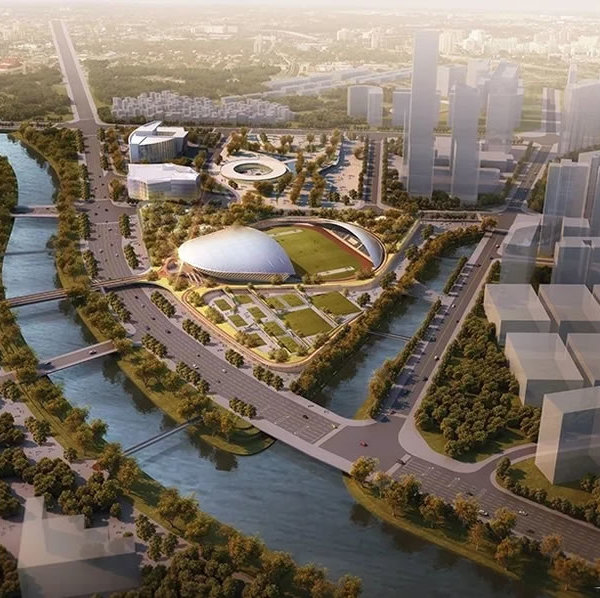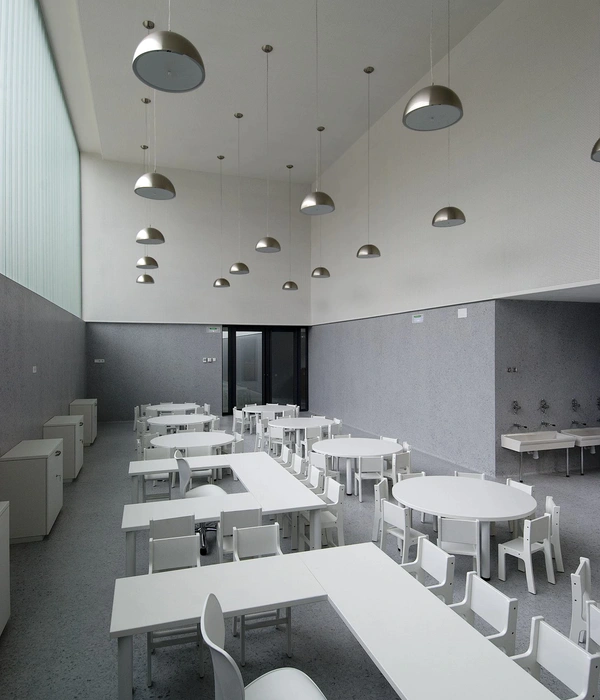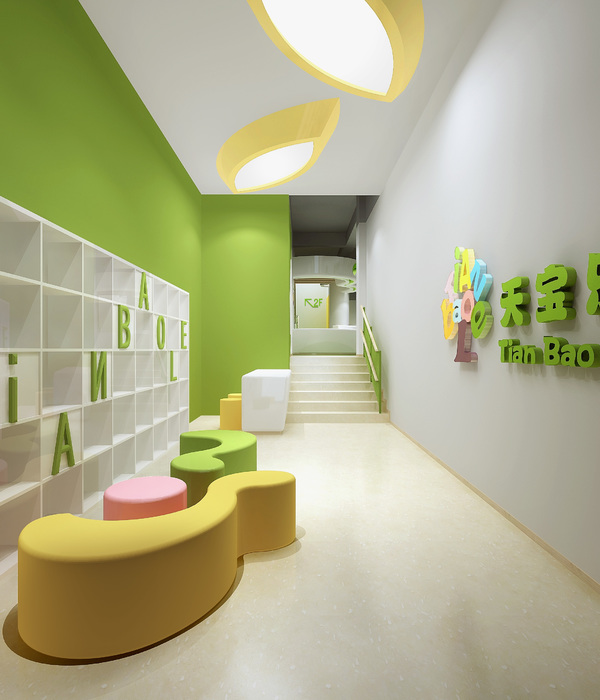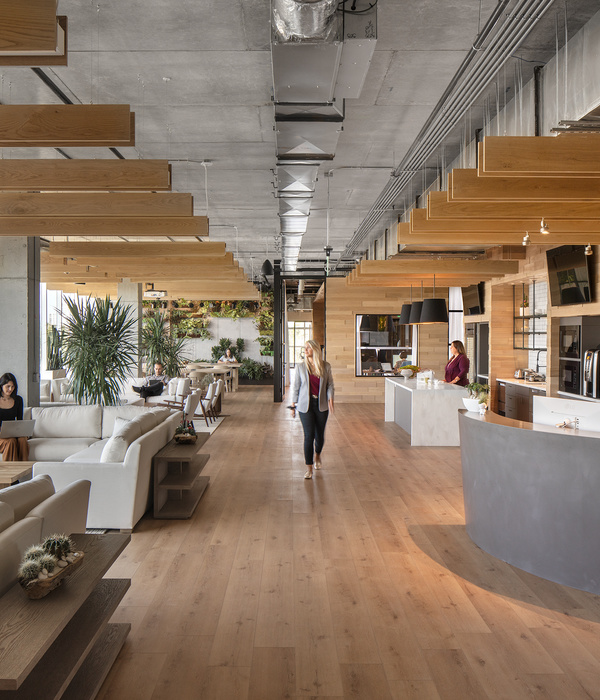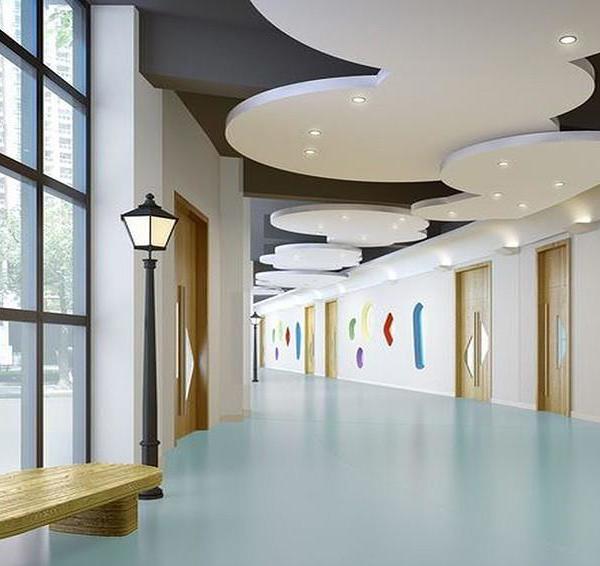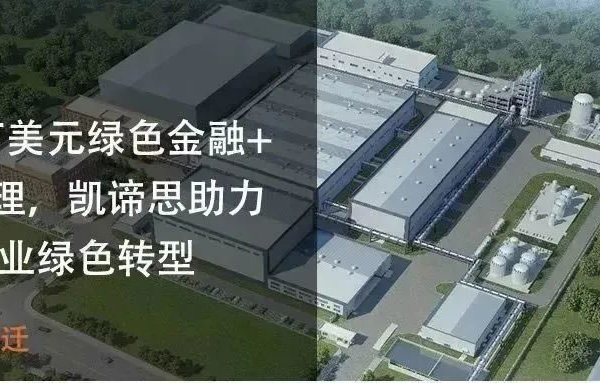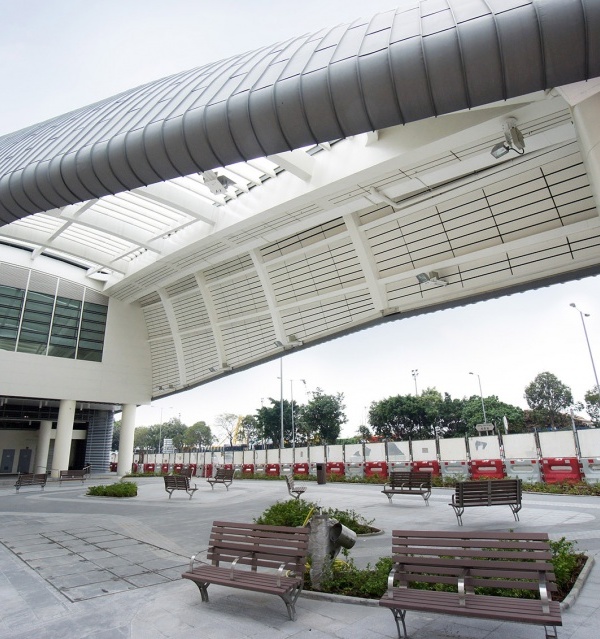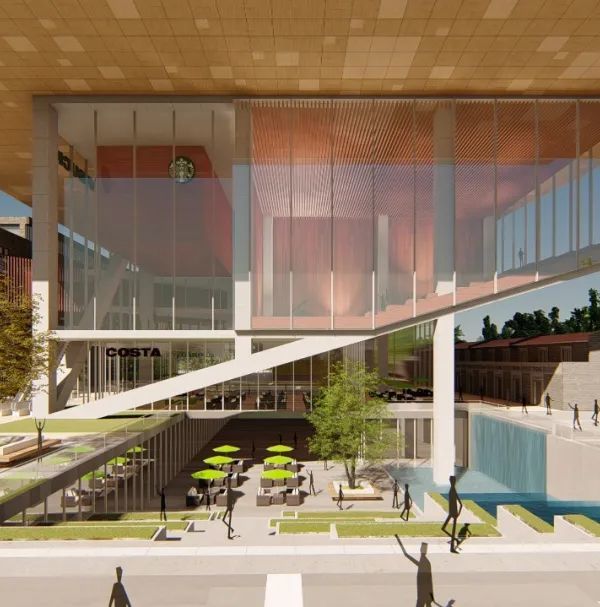由田纳西州诺克斯维尔的设计咨询公司After Architecture设计的Camp Barker纪念装置近日在华盛顿西北部的Garrison小学校园内落成。该纪念装置永久向公众开放,并从概念、形式和材料的使用上,彻底颠覆了华盛顿特区纪念碑的固有形式。特别是那些致力于表现内战的公共雕塑,曾引起全美范围的争论:比起歌颂战斗中的英勇无畏,它们实际上是在揭露残酷的压迫历史。
Designed by After Architecture, a Knoxville, Tennessee-based design and research firm, Camp Barker Memorial was recently completed on the grounds of Garrison Elementary School in northwest Washington, D.C. The memorial, which is permanent and open to the public, subverts typical Washington, D.C. monuments in concept, form, and material. In a time when the role of public sculptures, particularly those dedicated to the Civil War, is being debated across the United States, the project sheds light on America’s history of oppression rather than celebrates valor in battle.
▼位于小学内部的纪念装置,Camp Barker Memorial was recently completed on the grounds of Garrison Elementary School
After Architecture通过设计三个同时具备功能性、教育性和纪念性的作为大门入口的Camp Barkerl纪念装置,将该地点曾作为内战时期“走私营地”的历史清晰而深刻地揭示出来。在战争期间,盟军使用“走私货”一词来形容被认为是敌军财产的前俘奴人员。虽然在该遗址上最初的建筑是为联军士兵建造的营房,但后来又被改造成为给逃离奴隶制的人们居住的难民房。 Camp Barker的生活条件艰苦,但却造就了周边社区的稳定长久。
After Architecture’s Camp Barker Memorial frames and reveals the site’s history as Camp Barker, a Civil War ‘contraband camp,’ through the design of three entry gateways that are simultaneously functional, educational, and commemorative. During the war, Union forces used the term ‘contraband’ to describe formerly enslaved persons who were considered to be captured enemy property. While the site’s original buildings were built as barracks for Union soldiers, they were later transformed into refugee housing for those escaping slavery. Living conditions in Camp Barker were harsh but gave rise to the enduring community of the surrounding neighborhood.
▼从操场望向装置,view from playground to the entry gateway
“传统意义上,纪念碑作为一个可以参观的旅游目的地,在景观中是一个独特的形式,”After Architecture联合创始人凯尔·舒曼说道,“我们将纪念碑从它的基座上剥离,并把它设计成一个人人都能进入、接触和居住的结构空间。”
“Traditionally, a memorial takes form as a singular monument within the landscape, acting as a destination to be visited,” says After Architecture co-founder Kyle Schumann. “Taking the memorial off its pedestal and making it into a space allows it to be accessible to everyone—it becomes a structure that can be walked through, touched, and inhabited.”
▼一个人人都能进入、接触和停留的结构空间,a structure that can be walked through, touched, and inhabited
Camp Barker纪念装置分列于场地三面,覆盖了整个城市街区,同时标记了该场地的历史遗迹及其作为公立小学和受人欢迎的公园的现代属性。入口大门高10.5英尺,宽16英尺至6.5英尺不等,利用可通行可遮荫的开敞结构唤起人们对Camp Barker临时建筑的回忆。连续折叠的平面构成了每个装置的地面、墙面和屋顶面。在操场入口的一侧,较小的侧翼在大门厚度之内为孩童创造了可供嬉游的空间,同时鼓励年轻学生及路人关注该地区历史。
Placed on three sides of the site, which covers an entire city block, the gateways of Camp Barker Memorial simultaneously address the unmarked history of the site and its modern-day function as a public elementary school and popular public park. The entry portals, which are 10.5 feet tall and range from 16-feet to 6.5-feet wide, recall the informal settlement of Camp Barker through structures that allow for passage and shading. A continuous folded plane forms each passageway’s floor, walls, and roof. On the playground side of the entrance, smaller side wings create habitable spaces within the thickness of the gateway that engage the scale of the child and encourage young students and passersby to contemplate the site’s history.
▼较小的侧翼在大门厚度之内为孩童创造了可以嬉游的空间,smaller side wings create habitable spaces within the thickness of the gateway that engage the scale of the child
▼连续折叠的平面构成了每个装置的地面、墙面和屋顶面,a continuous folded plane forms each passageway’s floor, walls, and roof
该纪念装置无论在形式上(古典基座加雕像转变成由柱廊形成的可居住的折叠形式)还是材料上(白色大理石饰面转变成黑色木材)都有别于美国纪念碑的古典语言。此外,与定义华盛顿特区公共景观的白色大理石纪念碑和地标建筑形成鲜明对比的是,每个大门的外表面木材都经过烧焦处理,让人不禁回忆起从这个营地生长起来的社区力量及其艰辛。经过硬化和耐久处理的炭烧木材具有抗紫外线、耐候、耐腐蚀、防火和抗虫等特点。 “华盛顿的许多纪念碑都在褒奖美国人的勇气,但很少有人承认历史中的苦难部分,”After Architecture联合创始人凯蒂麦克唐纳说。 “我们希望更多的关注场地深厚的历史遗产,曾经为那些逃离奴隶制的人们提供庇护,进而又限制了他们的权利与自由。”黄铜装饰邀请人们对该地历史进行反思,同时也为附近区域播撒出温暖的光芒。站在大门以内,观察黄铜表面就可以看到自己的倒影和身后的背景。这种模糊的映射创造了一种可视化的幽玄之感,消除了个人身份属性,有利于全部人类共享环境条件。
▼大门可以打开和关闭,the door can be close or open
▼黄铜装饰邀请人们对该地历史进行反思,同时也为附近区域播撒出温暖的光芒,brass interiors invite personal reflection on the site’s history and cast a warm glow on the nearby area
The memorial diverges from the classical language of American monuments both in form (figural sculpture or colonnade on a classical pedestal becomes inhabitable folding form) and material (white marble becomes black wood). In contrast to the white marble monuments and landmarks that define Washington D.C.’s public landscape, the exterior surfaces of each portal are clad in charred wood that recalls the strength and hardship of the community that grew out of this camp. Hardened and enduring, charred wood is UV, weather, rot, fire, and insect resistant. “So many of Washington’s monuments celebrate American valor, but few acknowledge the more difficult parts of our history,” says After Architecture co-founder Katie MacDonald. “We hoped to bring attention to the complex legacy of the site as a place that provided shelter to those escaping slavery, but also continued to limit their rights and humanity.” Brass interiors invite personal reflection on the site’s history and cast a warm glow on the nearby area. Standing within the portal and looking into the brass surface, one can view the outline of one’s own reflection and the surrounding colors, but not individual features. This blurred reflection creates a kind of visible ghost that removes personal identity in favor of a shared human condition.
▼经过硬化和耐久处理的炭烧木材具有抗紫外线、耐候、耐腐蚀、防火和抗虫等特点,hardened and enduring, charred wood is UV, weather, rot, fire, and insect resistant
三个装置都包括有由Vinnie Bagwell制作的凹陷的黑色青铜叙事浅浮雕,她是一位以赞颂非裔美国人历史而闻名的艺术家。它们描绘非洲裔美国人历史中的关键时刻、重要文件和著名人物,包括旅居者真相、弗雷德里克·道格拉斯、威廉·劳埃德·加里森,“我们是人民”以及1862年的《华盛顿解放法案》。作为Garrison小学的公共娱乐空间入口,Camp Barker纪念装置创建了一个新的纪念碑模式,旨在促发日常生活中的不同意识,增进对话。
Each of the three entryways also incorporates a recessed narrative bas relief sculpture made of blackened bronze by Vinnie Bagwell, an artist known for her works celebrating African American history. They depict key moments, texts, and figures from African American history including Sojourner Truth, Frederick Douglass, William Lloyd Garrison, “We the People,” and 1862, the year of the DC Emancipation Act. Framing the entryways to Garrison Elementary School’s public recreation spaces, the Camp Barker Memorial asserts a new model of memorial intended to foster awareness and dialogue as part of the fabric of everyday life.
▼由Vinnie Bagwell制作的凹陷的黑色青铜叙事浅浮雕,each of the three entryways also incorporates a recessed narrative bas relief sculpture made of blackened bronze by Vinnie Bagwell
▼模型,modeling
▼轴测图,axon
▼立面图,elevations
▼平面图,site plan
Project details:
Structural Engineer: Yun Associates, LLC
Relief Sculpture: Vinnie Bagwell
Photography: Sam Oberter
Site: Garrison Elementary School, Washington, D.C., USA
Completed: May 2019Tennessee
{{item.text_origin}}

